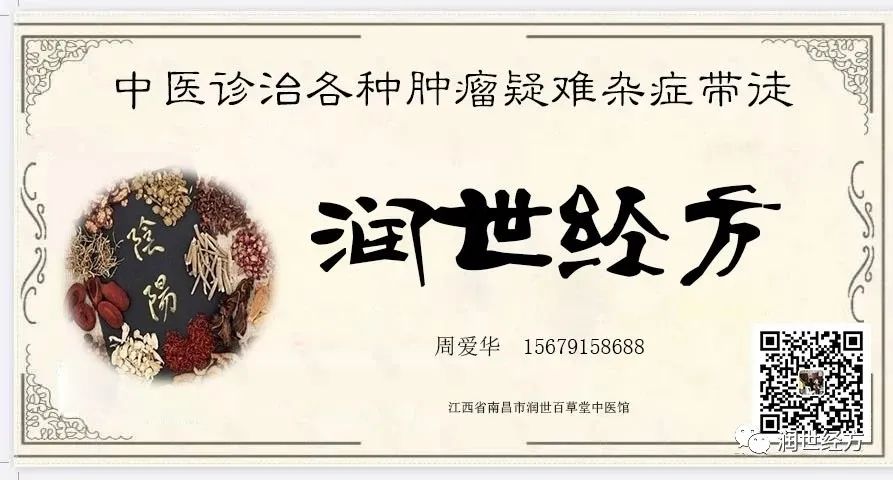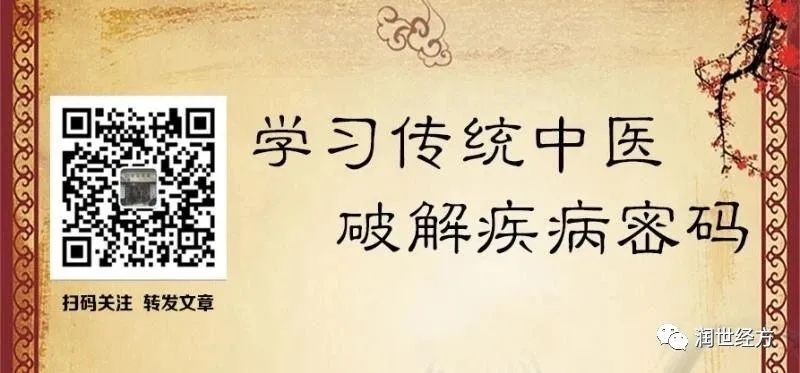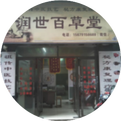
The interplay of yin and yang throughout the four seasons affects the flow of qi. In spring and summer, yang energy increases while yin energy diminishes; conversely, in autumn and winter, yin energy strengthens while yang energy wanes. The balance of yin and yang in nature influences the health of individuals. When external pathogenic factors invade the body’s three yang meridians, if not treated promptly, they can penetrate into the six fu organs. Similarly, dietary habits, emotional states, and sexual activity can disturb the three yin meridians, leading to potential harm to the five zang organs if not addressed. The physiological functions of the five zang and six fu organs are interconnected: the five zang nourish the body through the circulation of nutrients and blood via the three yin meridians, while the six fu organs release yang energy through the three yang meridians. External pathogens can invade from the surface to the interior, affecting qi, the three yang meridians, the six fu organs, and the five zang organs; internal pathogens can also affect the body from the inside out, impacting blood, the three yin meridians, the five zang organs, and the six fu organs. The harmony of yin and yang is essential for health; if the exterior is in excess, the interior must be deficient, and vice versa. This imbalance is a fundamental manifestation of pathogenic invasion disrupting the original equilibrium.
What do deficiency and excess mean? “When pathogenic qi is strong, it indicates excess; when vital essence is depleted, it indicates deficiency.” Pathogenic qi is not a constant presence in the body; it can enter from the outside or arise from within. When pathogenic qi invades the body, an excess can damage fluids and deplete qi, leading to deficiency. In the “Su Wen: Treatise on Regulation of the Menstrual Cycle,” the Yellow Emperor asks, “I understand the manifestations of blood, qi, form, and will in terms of deficiency and excess. How do deficiency and excess arise?” The circulation of nutrients and blood occurs within the meridians, while defensive qi circulates outside. The invasion of external or internal pathogens disrupts the balance of qi and blood, leading to an accumulation of qi and blood in a state of excess or deficiency. When blood is in excess, it repels qi; when qi is in excess, it leads to blood deficiency. Qi is yang, characterized by heat and agitation; blood is yin, characterized by cold and tranquility. Therefore, when qi is abundant, it generates heat; when blood is abundant, it generates cold. Blood accumulation in the yin organs leads to heavy yin, while qi accumulation in the yang fu organs leads to heavy yang, which can cause agitation. Blood accumulation on the surface leads to exterior cold, while qi disorders in the interior lead to internal heat. Blood accumulation in the upper body leads to restlessness, while qi accumulation in the lower body leads to irritability. Blood accumulation in the lower body leads to forgetfulness, while qi accumulation in the upper body leads to confusion. Blood, being yin and cold, requires the warmth of yang qi for proper flow; thus, yin blood prefers warmth and dislikes cold. Cold causes blood to congeal and flow poorly, while warmth disperses cold and restores normal circulation. When pathogenic qi accumulates externally, the exterior is in excess, leading to internal blood deficiency; when blood accumulates internally, the interior is in excess, leading to exterior qi deficiency. The Yellow Emperor states: “The most fundamental aspects of a person are blood and qi.” However, you mentioned that blood accumulation leads to qi deficiency, and qi accumulation leads to blood deficiency. Does this imply that there is no excess? Qi Bo replies: “Where there is pathogenic accumulation, there is excess; where there is no pathogenic accumulation, there is deficiency.” Therefore, when pathogenic factors accumulate in qi, it leads to blood deficiency; when they accumulate in blood, it leads to qi deficiency. Blood in excess leads to qi deficiency, and qi in excess leads to blood deficiency, resulting in a lack of harmony between blood and qi, thus causing deficiency.
Nine Points on the Concept of Deficiency and Excess in TCM
1. The concept of deficiency and excess originates from the principles of vitality and the relationship between metabolic intake and output, specifically the different relationships between stomach qi, body fluids, and pathogenic waste. This is the clear distinction of deficiency and excess established by ancient practitioners, although it does not negate the transitional and complex relationships between deficiency and excess.
2. The concept of deficiency and excess has clear boundaries. It is based on the pathways of expelling pathogens and eliminating waste, which correspond to the intake and supplementation of deficiency (primarily through dietary therapy).
3. Deficiency and excess can manifest on different levels: in the case of excess due to pathogenic invasion, such as wind causing fluid deficiency, this is not classified as deficiency syndrome. There are also instances where deficiency and excess are treated simultaneously, or where supplementation is solely for deficiency. It is incorrect to view deficiency and excess as strictly oppositional; while they are interrelated, the concept of deficiency and excess must have clear boundaries to avoid confusion, such as mislabeling warming treatments as “supplementing yang” or describing conditions related to sweating, vomiting, or purging as “deficiency,” which leads to confusion in the understanding of deficiency and excess.

4. The issue of deficiency caused by weakened function or loss of fluids due to pathogenic invasion is not classified as deficiency syndrome. Many so-called “deficiencies” are not diagnosed as “deficiency syndrome requiring supplementation” but rather as excess syndromes requiring expulsion of pathogens. Conversely, functional decline can also lead to metabolic waste, which is more complex than simply expelling pathogens.
5. Supplementing deficiency herbs do not have a specific tendency to supplement the exterior or the interior. Supplementing deficiency herbs do not specifically target the exterior or the interior, which is determined by the original definition of deficiency and excess. This further confirms that “deficiency syndrome has no distinction between exterior and interior.”
6. If the concepts of “exterior deficiency and interior deficiency” exist, it implies that the concepts of exterior and interior are more significant than deficiency and excess, which is not valid. The treatment of exterior and interior is merely a part of expelling pathogens through classical formulas. The concept of deficiency and excess encompasses the metabolic pathways of exterior and interior, as well as the pathways of supplementation that do not belong to exterior and interior treatment. This is precisely the “loss of what is essential” in the methods of expelling pathogens, thus the concept of deficiency and excess includes the concept of exterior and interior, rather than the reverse.
7. The relationship of entry and exit in the concept of deficiency and excess is not equivalent to the relationship of yin and yang, nor does it possess the properties of one-to-one correspondence with yin and yang. Therefore, the eight principles cannot be placed above the concepts of deficiency and excess.
8. The definitions and judgment standards of deficiency and excess in external treatment methods differ completely from those in internal treatment methods, which requires further elaboration.
9. The issue of deficiency and excess is a significant problem in TCM. The “Huangdi Neijing” does not clarify this adequately. This is why, since the Song Dynasty, no TCM practitioner has emphasized the statement by Emperor Taizong of the Song, “First distinguish deficiency and excess, then observe exterior and interior” in the preface to the “Taiping Shenghui Fang,” as there is no basis for it in the “Huangdi Neijing.” This is due to the misunderstanding and loss of the recursive concepts of deficiency and excess and exterior and interior, leading to a state of confusion in TCM theory after the Song Dynasty.
The above nine points can be fully corroborated within the framework of Zhang Zhongjing’s “Shanghan Lun.”
Deficiency and excess refer to the nature of pathological changes and are extremely important in differential diagnosis.
Thus, deficiency requires supplementation, while excess requires purging, which is a fundamental principle of differential treatment; supplementation leads to excess, while purging leads to deficiency, which is the inevitable result of accurate differential treatment. However, distinguishing the nature of pathological changes and the treatment methods of supplementation and purging is relatively easy, but achieving precise differentiation and application is quite challenging.
Based on literature review and clinical experience, the following compilation of the meanings of deficiency and excess is provided for research purposes, which may assist in differential diagnosis and treatment.
When analyzing the nature of pathological changes in differential diagnosis, it has various meanings that should not be conflated, as this would affect the accuracy of the diagnosis. Upon detailed analysis, there are several categories:
01
Distinguishing deficiency and excess based on the strength of the righteous qi
In the “Shanghan Lun: Method of Pulse Diagnosis,” it states: “When the pulse comes quickly and leaves slowly, this indicates internal deficiency and external excess. When the pulse comes slowly and leaves quickly, this indicates internal excess and external deficiency.”
In the commentary by Zhou Chengzhi in the “Interpretation of Pulse Diagnosis,” it explains: “The coming and going refers to the entry and exit of the pulse; entry and exit refer to the internal and external aspects of yin, yang, blood, and qi. A quick pulse coming and a slow pulse leaving indicates more output and less input, leading to qi accumulation externally, hence external excess. A slow pulse coming and a quick pulse leaving indicates less output and more input, leading to qi accumulation internally, hence internal excess. External excess indicates weak absorption of yin, hence internal deficiency; internal excess indicates weak propulsion of yang, hence external deficiency.”
The entry and exit of the pulse, whether it is yin or yang qi, all belong to the category of righteous qi. Therefore, the deficiency and excess mentioned here refer to righteous qi and do not include pathogenic qi.
02
Distinguishing deficiency and excess based on the strength of pathogenic qi and weakness of righteous qi
In the “Su Wen: Treatise on the Discussion of Deficiency and Excess,” it states: “When pathogenic qi is strong, it indicates excess; when vital essence is depleted, it indicates deficiency.”
In the commentary by Zhang Zhizhong in the “Su Wen Collection,” it explains: “Pathogenic qi refers to the evils of wind, cold, heat, and dampness, while vital essence refers to the qi of nourishment and defense. Pathogenic qi can be slightly strong, hence strong pathogenic qi indicates excess, while righteous qi can be strong or weak, hence depletion of vital essence indicates deficiency. Depletion means loss; it can be due to being taken by pathogens.”
Japanese scholar Tanba Genkan in the “Su Wen Commentary” states: “When pathogenic qi invades the body, it must first take advantage of the weakness of vital essence to enter. Once inside, if vital essence is abundant and pathogenic qi is also strong, it indicates excess, such as in the case of a strong cold causing excess in the stomach. If pathogenic qi enters and the vital essence cannot resist it, leading to depletion of vital essence, it indicates deficiency, such as in the case of a direct cold attack.”
Whenever pathogenic qi is present, regardless of its strength, it indicates an excess syndrome; whenever there is no pathogenic qi present, only the depletion of vital essence exists, regardless of whether it pertains to qi or blood, in the zang or fu organs, it indicates a deficiency syndrome.
This concept is widely applied in clinical practice.
03
Distinguishing deficiency and excess based on the presence or absence of disease
There are two situations regarding the presence or absence of disease.
First, disease is considered excess, while absence of disease is considered deficiency.
As stated in the “Nanjing: Difficulty 48”: “External pain and internal comfort indicate external excess and internal deficiency; internal pain and external comfort indicate internal excess and external deficiency.”
When pathogenic factors are external, they cause external pain, which indicates that the pathogenic factors are on the surface. For example, in the case of Gui Zhi Tang or Ma Huang Tang, symptoms such as aversion to cold, fever, and body aches are external manifestations. Since the pathogenic factors have not penetrated internally, the interior is comfortable and without suffering.
When the pathogenic factors are external, it is termed external excess, and since the interior is comfortable, it is termed internal deficiency, which is in contrast to external excess; when the pathogenic factors occur internally and cause internal pain, regardless of whether it is cold or heat, it is termed internal excess; since the pathogenic factors are not external, the exterior is comfortable, hence termed external deficiency.
Thus, excess indicates disease, while deficiency indicates absence of disease, which is also a contrasting meaning.
Second, disease is considered deficiency, while absence of disease is considered excess.
As stated in the “Nanjing: Difficulty 58”: “Yang deficiency and yin excess lead to sweating and recovery; purging leads to death; yang excess and yin deficiency lead to sweating and death; purging leads to recovery.”
Shuai Shou explains: “When one is ill, it is considered deficiency; when one is not ill, it is considered excess. Only deficiency allows for the invasion of pathogens; only excess prevents the invasion of pathogens. This refers to the harmony of exterior and interior diseases, particularly in cases of cold transmission. When the exterior disease is harmonious with the interior, sweating can be used to resolve the exterior; however, if purging is applied, it harms the unill righteous qi and causes the exterior pathogens to penetrate deeply into the interior, leading to death.”
Thus, this deficiency and excess are interchangeable terms for disease and absence of disease, which is contrary to the meaning of “Difficulty 48.”
04
Distinguishing deficiency and excess based on the severity of the disease
Generally, mild disease is considered deficiency, while severe disease is considered excess.
The differentiation between the major and minor forms of the “Xia Xian Tang” and “Xie Xin Tang” in the “Shanghan Lun” belongs to this category.
In the “Shanghan Lun,” it states: “In the case of a cold for six or seven days, if there is a hard mass in the chest and a tight pulse, it indicates heat excess in the chest, and Da Xian Tang is indicated; if there is a small mass in the chest, with tenderness upon palpation and a slippery pulse, it indicates a minor form of heat excess, and Xiao Xian Tang is indicated.”
The condition of chest obstruction is classified as a yang heat excess pathogen accumulating in the chest, hence termed “chest heat excess.”
When the heat pathogen is strong and deeply rooted, it is termed major chest obstruction, hence the use of Da Huang, Mang Xiao, and Gan Sui to purge the heat excess; when the heat pathogen is mild and superficially rooted, it is termed minor chest obstruction, hence the use of Huang Lian, Ban Xia, and Gua Lou to clear heat and disperse the obstruction.
Despite the differences in severity, they are both classified as heat excess syndromes.
The Xie Xin Tang syndrome, which is a deficiency syndrome, is characterized by the prior deficiency of yang qi in the middle jiao, with the internal invasion of an invisible heat pathogen, hence the different treatments of Ban Xia Xie Xin Tang, Sheng Jiang Xie Xin Tang, and Gan Cao Xie Xin Tang, all of which are based on warming and supplementing the yang qi of the middle jiao, supplemented with Huang Qin and Huang Lian to clear the internal invasion of the invisible heat pathogen. Thus, the obstruction syndrome is fundamentally a deficiency syndrome.
In the “Shanghan Lun,” it states: “When the disease arises from yang, purging leads to chest obstruction; when the disease arises from yin, purging leads to obstruction.”
Thus, the obstruction syndrome is termed “chest heat excess,” while the obstruction syndrome is termed “this is not heat excess, but rather due to deficiency in the stomach, causing qi to reverse upwards, hence the hardness.” This indicates that the severe heat in the chest is classified as an excess syndrome, while the mild heat in the stomach is classified as a deficiency syndrome.
05
Distinguishing deficiency and excess based on cold and heat
Initially, cold is considered deficiency, while heat is considered excess.
In the “Su Wen: Treatise on Taiyin and Yangming,” it states: “The yang path is excess, while the yin path is deficiency,” which carries this meaning. In the commentary by Tanba Genkan in the “Yao Zhi Tong Yi,” it states: “Cold leading to diarrhea is widely recognized as a major deficiency that requires supplementation; tidal heat and delirium are widely recognized as a major excess that requires purging.”
The former represents a deficiency cold syndrome, while the latter represents an excess heat syndrome.
Secondly, cold is considered yin excess and yang deficiency, while heat is considered yang excess and yin deficiency.
In the “Su Wen: Treatise on Regulation of the Menstrual Cycle,” it states: “When yin is abundant, it leads to internal cold; when yang is deficient, it leads to external cold;” this belongs to the former; “when yang is abundant, it leads to external heat; when yin is deficient, it leads to internal heat;” this belongs to the latter. These are all oppositional concepts of yin and yang.
06
Distinguishing deficiency and excess based on the shape of the disease
This primarily involves distinguishing based on the accumulation, dispersion, emptiness, and hardness of the disease.
For example, qi stagnation upwards is considered excess, while downward sinking is considered deficiency; qi accumulation internally is considered excess, while external dispersion is considered deficiency.
07
Distinguishing deficiency and excess based on wind pathogens
In the “Ling Shu: Nine Palaces and Eight Winds,” it states: “Wind that comes from its native place is considered real wind, which promotes growth and nourishes all things; wind that comes from the conflict is considered false wind, which harms people and is associated with death and injury. One should be cautious of false wind and avoid it.”
Zhang Jiebin explains: “The native place refers to the place where Taiyi resides. For example, when the moon is in the first month, the wind comes from the north, which is the correct energy of winter; when the moon is in the second month, the wind comes from the east, which is the correct energy of spring; when the moon is in the third month, the wind comes from the south, which is the correct energy of summer; when the moon is in the fourth month, the wind comes from the west, which is the correct energy of autumn. The four corners and twelve months all have this principle.”
When the qi is in its correct state, the righteous qi is abundant, hence it is termed real wind, which can promote growth and nourish all things. When the qi is not in its correct state, the righteous qi is insufficient, hence it is termed false wind, which can harm people and is associated with death and injury, and should be avoided.” (“Liu Jing: Nine Palaces and Eight Winds” Commentary, Volume 27)
In the “Neijing,” false wind and real wind are also referred to as “false pathogenic factors and true pathogenic factors.” For example, in the “Ling Shu: Pathogenic Factors Hidden in the Body,” it states: “False pathogenic factors cause the body to tremble and move. True pathogenic factors cause subtle changes in the body…”
Based on the analysis of the above materials, the concept of deficiency and excess in TCM is extremely broad, encompassing multiple aspects.
Both righteous qi and pathogenic qi can exhibit deficiency and excess, thus in pathological changes and syndromes, there is always a presence of deficiency and excess. Simply relying on the statement from the “Discussion on Deficiency and Excess” that “when pathogenic qi is strong, it indicates excess; when vital essence is depleted, it indicates deficiency” cannot encompass the full scope of deficiency and excess.
Note: The herbal formulas and treatment methods mentioned in this article should be used under the guidance of a TCM practitioner. Any consequences arising from self-prescribing based on this article are at your own risk.


